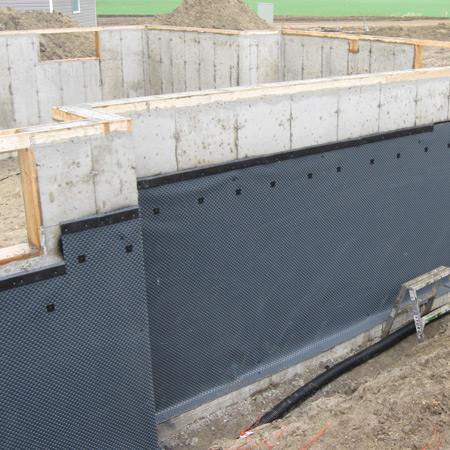Blue Seal Waterproofing Rubber Membrane Installation
9235 Waterproofing Membrane is a thin (.02”.5mm), load bearing, flexible, liquid applied waterproofing membrane system consisting of a liquid rubber polymer that is cold applied with an integral reinforcing fabric to provide a seamless waterproof membrane. Ames® Blue Max® outperforms isocyanate urethanes, and works well as a primer and waterproofing membrane for Ames® products such as Ames® Safe-T-Deck®, Ames® Snow Seal®, Ames® Maximum-Stretch®, Ames® Block & Wall® Liquid Rubber, Ames® Block & Wall® Acrylic, Ames® Iron Coat® and many other coatings.
- Blue Seal Waterproofing Rubber Membrane Installation Cost
- Blue Seal Waterproofing Rubber Membrane Installation Contractors
- Blue Seal Waterproofing Rubber Membrane Installation Adhesive
 The deck is finished now
The deck is finished now
Blueskin ® WP 200 is a self-adhered composite membrane consisting of an SBS rubberized asphalt compound, integrally laminated to a blue, high-density polyethylene film. The membrane is specifically designed for self-adhering to a prepared substrate, and provides a high-performance waterproofing barr. Blue Seal Waterproofing Rubber Membrane. Model # BE185169 Store SKU #. Water-based, liquid applied, waterproof membrane. Easy and fast installation to.
Blue Seal Waterproofing Rubber Membrane Installation Cost
Blue Seal Waterproofing Rubber Membrane Installation Contractors


Blue Seal Waterproofing Rubber Membrane Installation Adhesive
Thanks for the editorial comments.I ended up topping the joists and the surrounding frame to which they're attached with 1x3 strips of Sienna p/t wood (flush on one side of the joist, leaving a 'lip' on the other side). Then I covered those with tar paper. I cut each strip so there's an overhang of an inch or two drooping down on each side to divert water away from the joists.
I used a few staples to keep them in place initially, but they really got fastened well once I screwed the deck boards in place from below (using the aforementioned 'lip'). That should go a long way towards prolonging the life of the supporting structure.
In fact, I fastened boards and railings such that when you stand on the deck there's not a single screw to be seen and thus there are no screw holes that can collect water and start to rot. All horizontal wood (boards, railings, steps) is screwed or bolted into place from below and all vertical wood (posts, balusters) is screwed or bolted into place from the outside of the deck, where each screw or bolt is countersunk into the wood so it's less likely to get wet.
Now, if I can only keep the ants from 'settling in' in the years to come!
